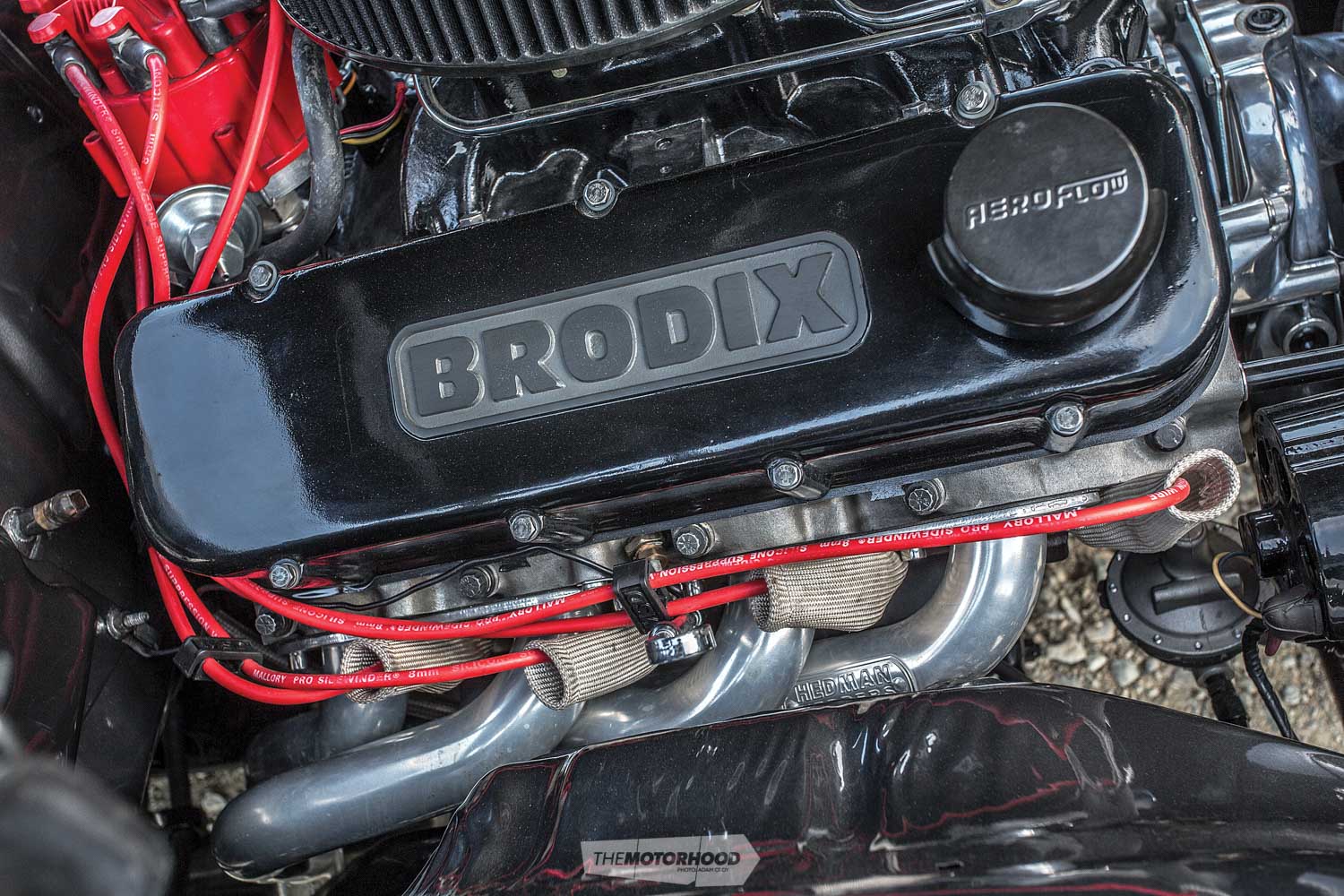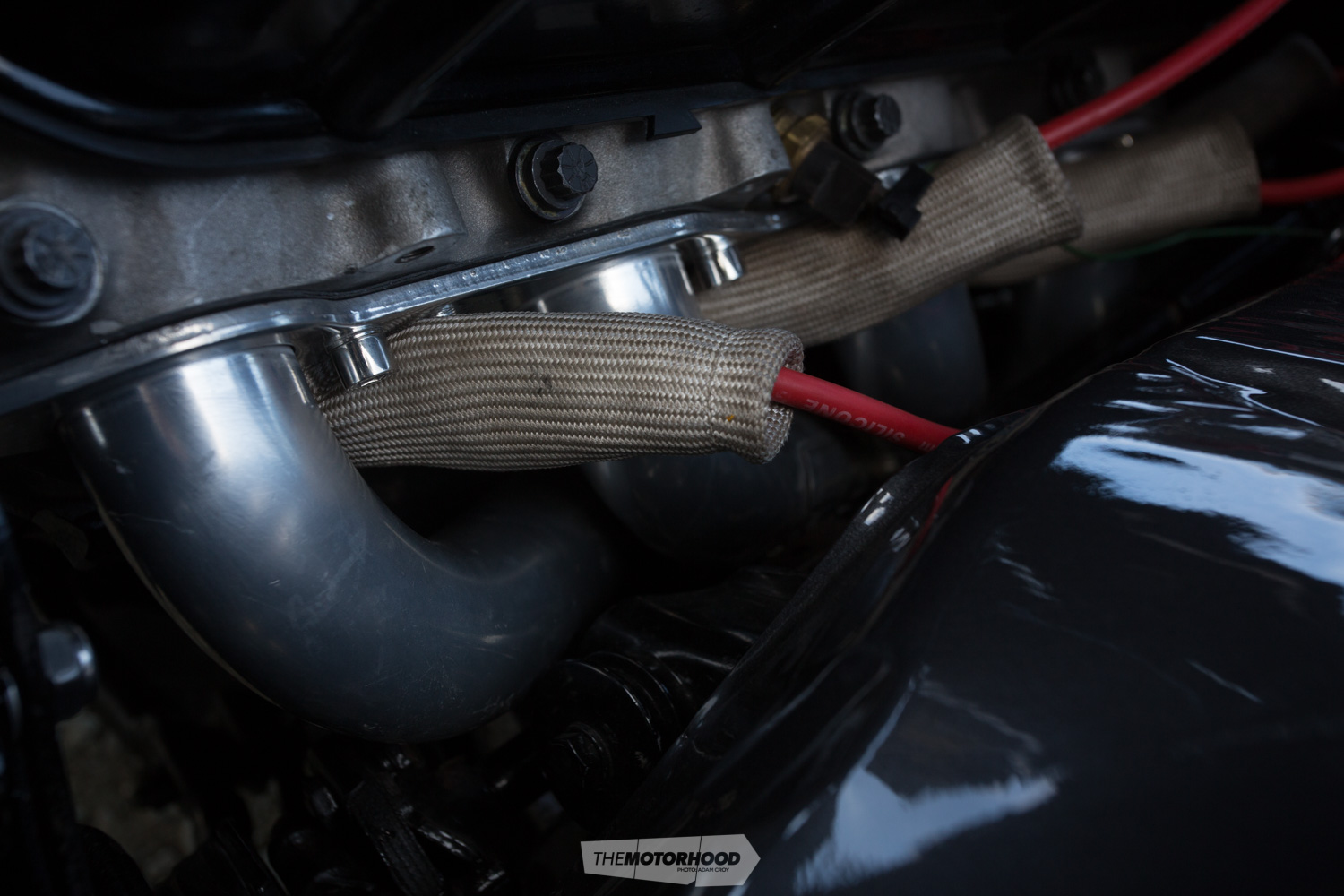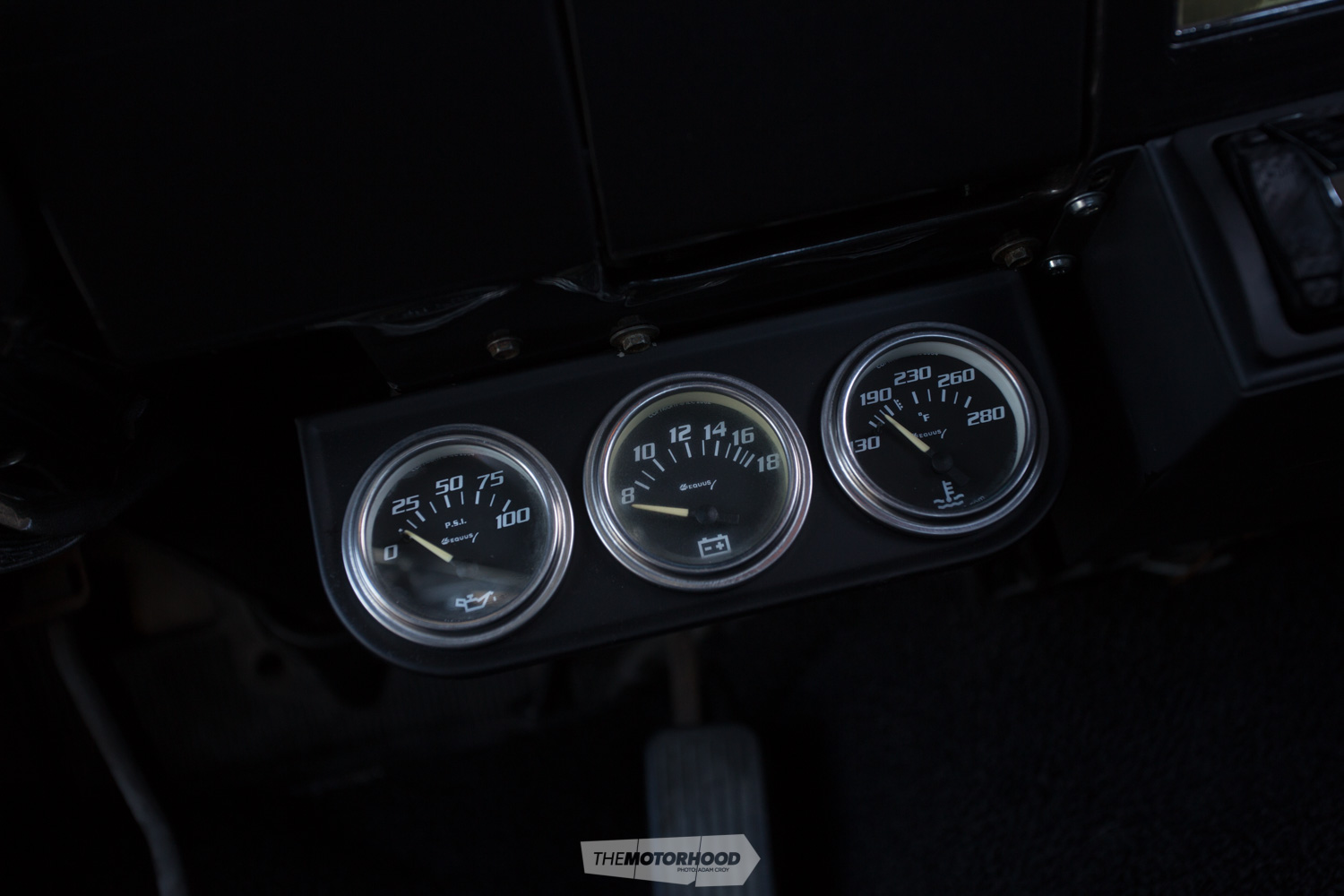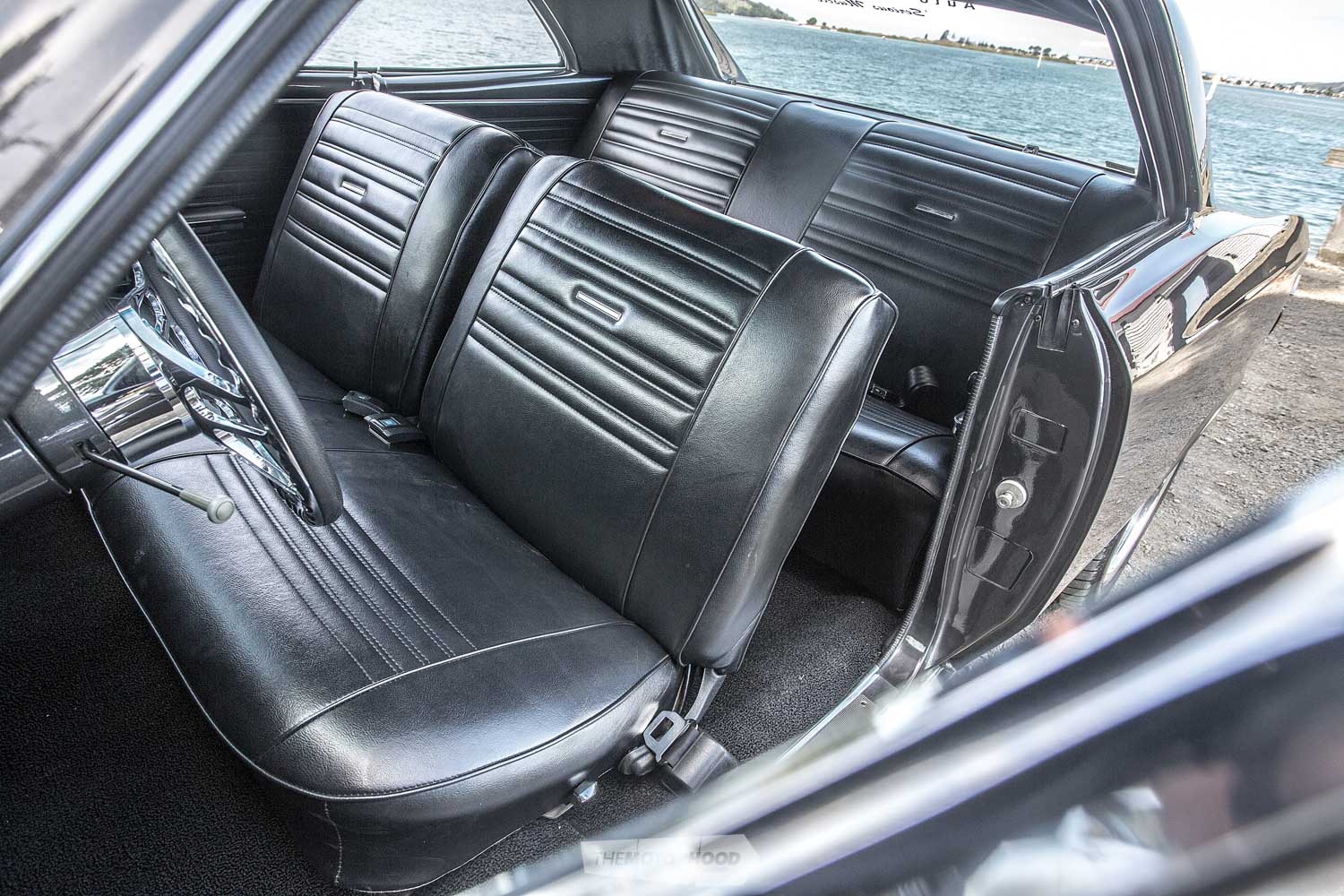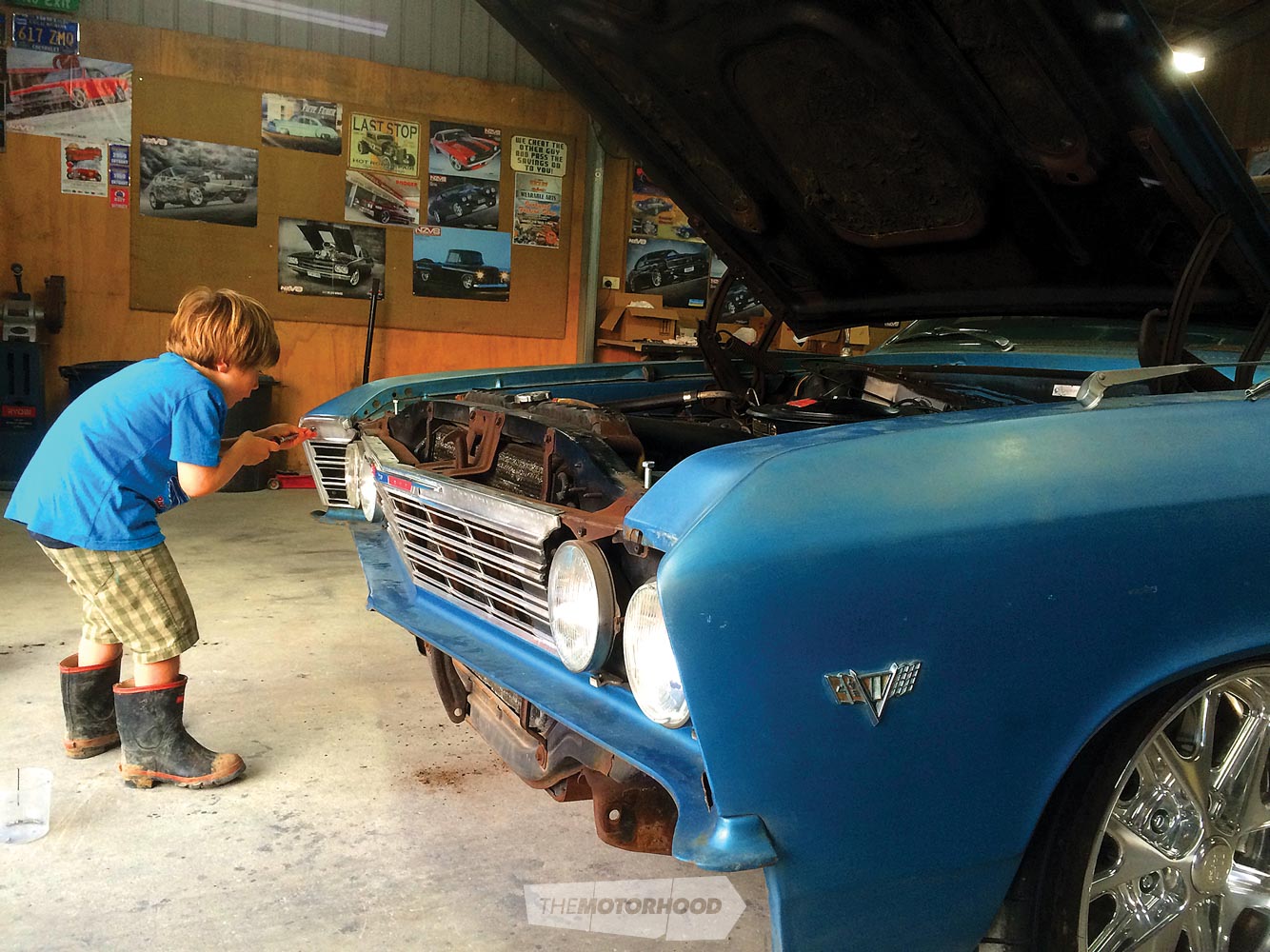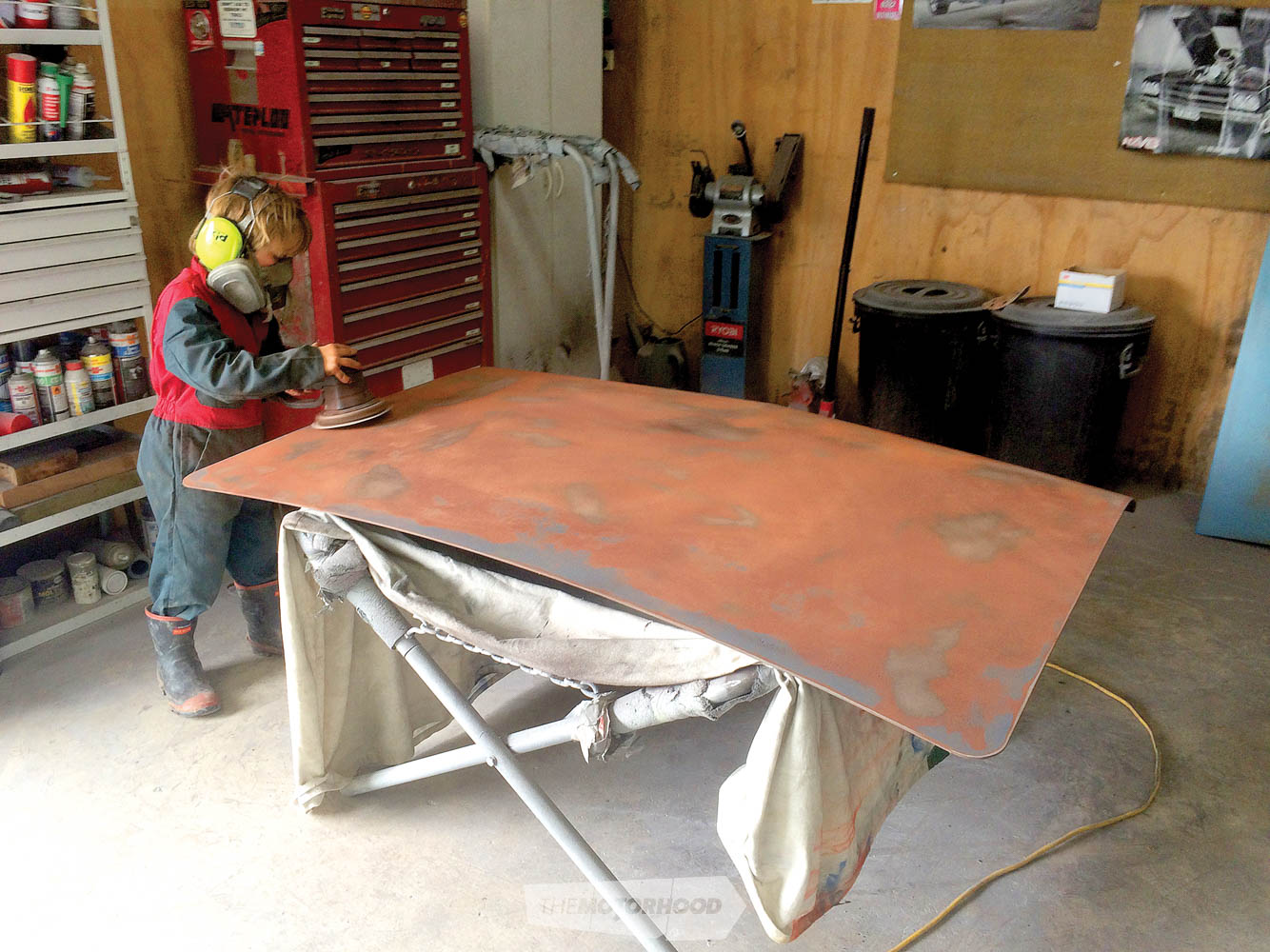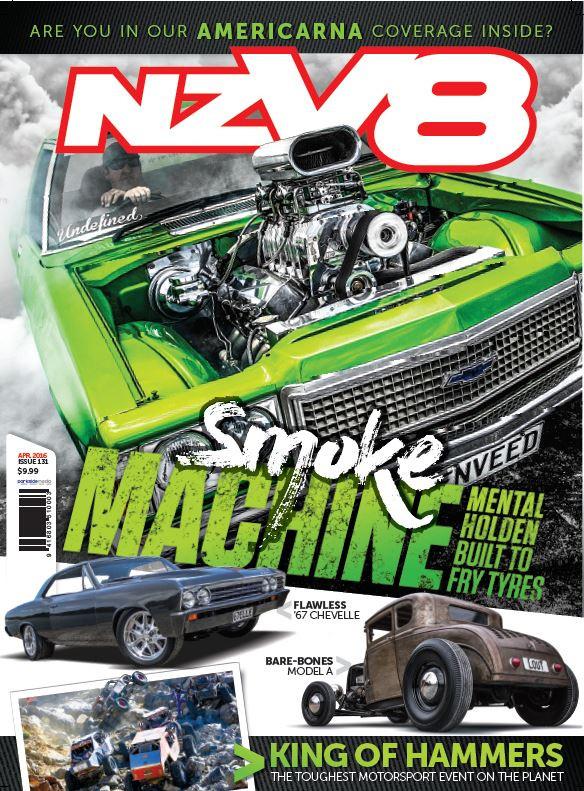Phil Wright’s latest accomplishment is something truly special — a family-friendly cruiser with a show-quality finish
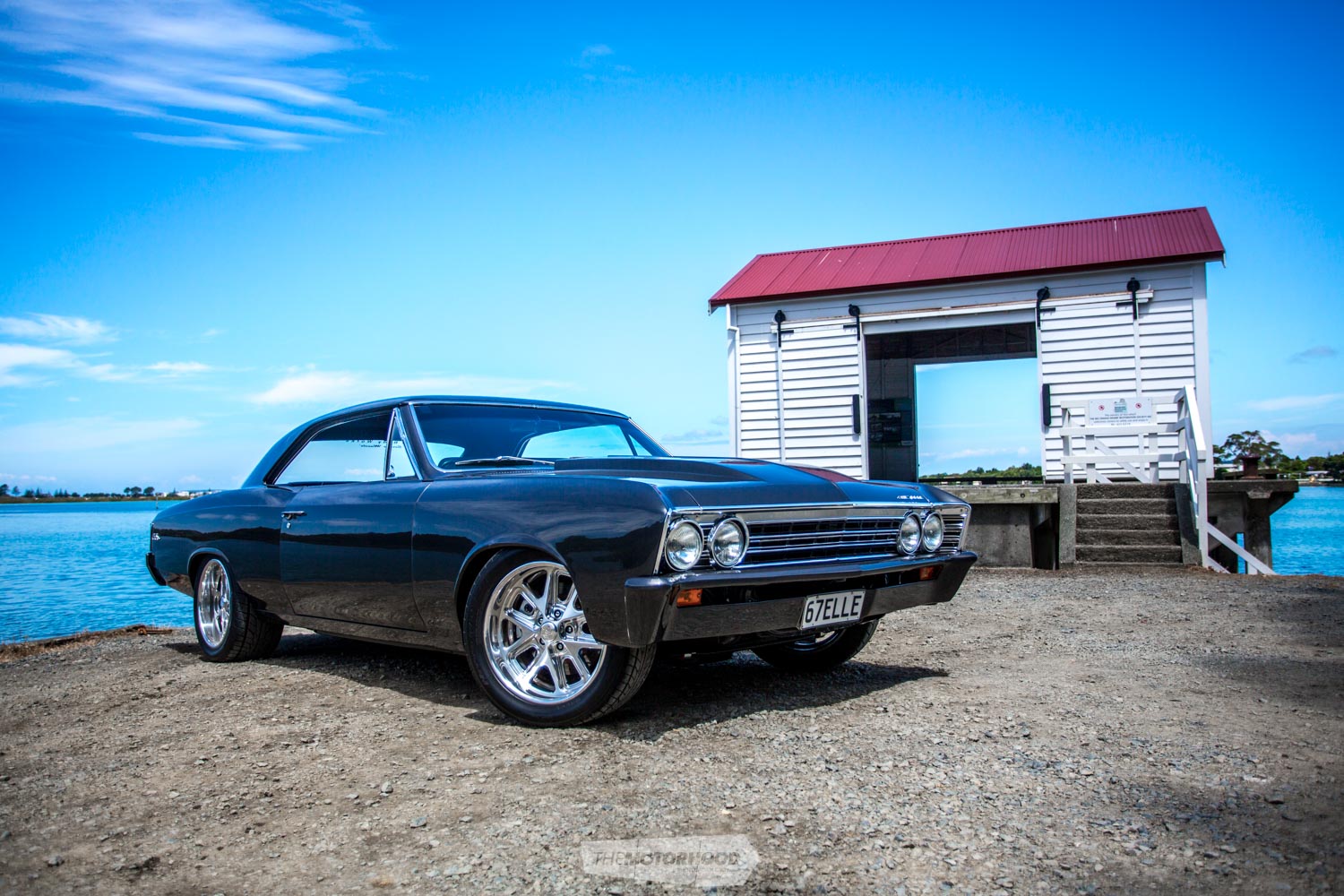
“I’ve always liked the pro-touring look of these Chevelles,” Phil explains — and, for a serial car builder such as himself, that’s reason enough for him to build a masterpiece such as the one you’re looking at right now. His last car was a beautifully presented ’72 Dodge Challenger, featured in NZV8 Issue No. 67, and, in his time, he’s built and owned far too many cars to count.
“I’ve done the whole show-car thing, and I’m over it. I just wanted a car that I can enjoy with the whole family,” he says, and he’s deadly serious — as unbelievable as that may sound given the Chevelle’s show-quality finish both inside and out. However, having sold his Challenger, it wasn’t long before Phil was itching to get his hands back into a project car. One night, while browsing the internet, he came across a photo of a ’67 Chevelle done up in the pro-touring style, and the penny dropped: that’s exactly what his next car would be.
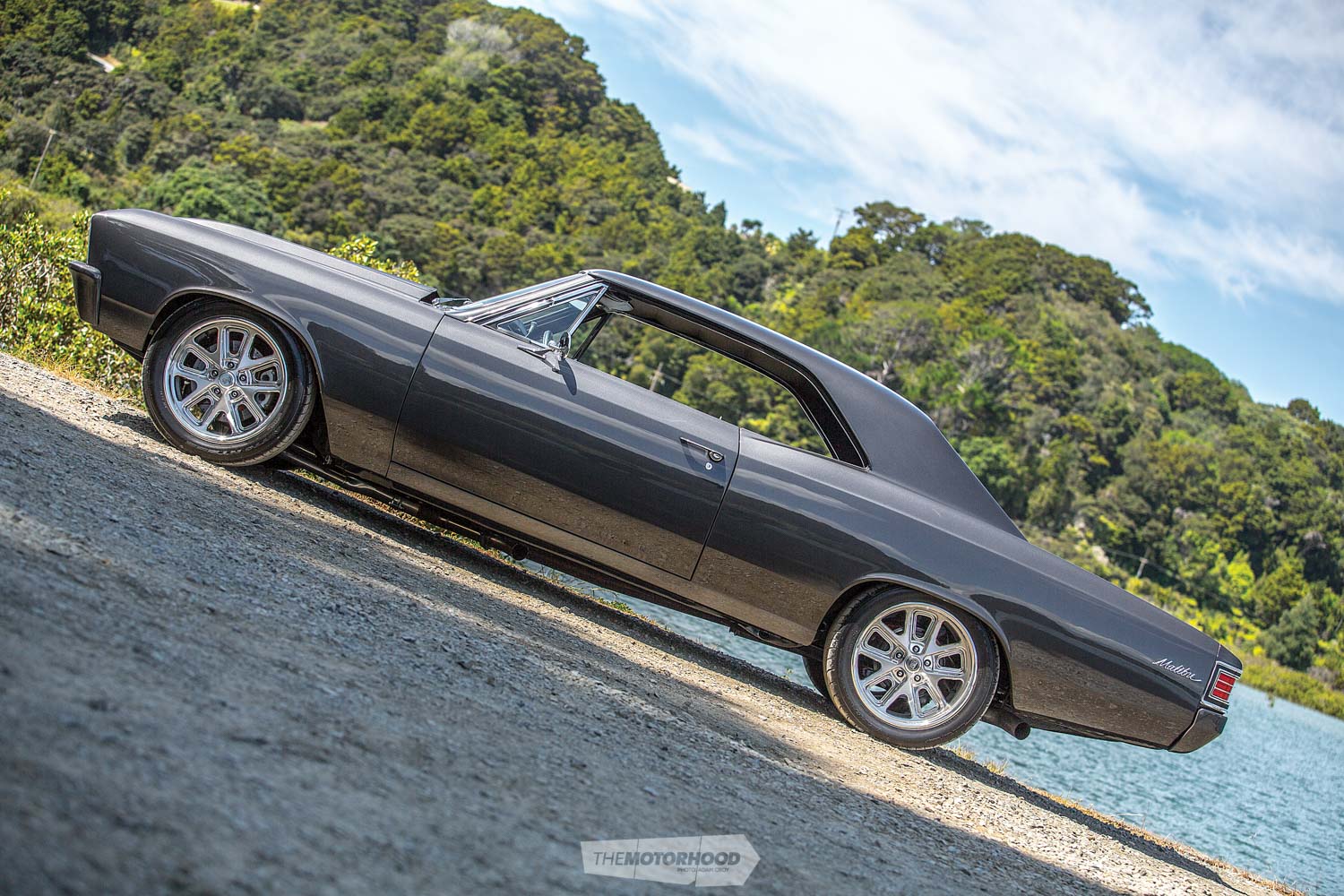
It didn’t take long for Phil to come across a suitable ’67. On a trip to the States, he found an unmolested one-owner California car with a genuine 54,000 miles on the odometer. The Chevelle was brought to New Zealand in July 2014 and readied for the road. A factory original, powered by a 283ci small block and Powerglide, the Chevelle wore its original patina with pride — to Repco Beach Hop 15, and elsewhere — although this guise was only ever going to be a stopgap until Phil got around to building it into the Chevelle he wanted. Then, on a wet weekend in August 2015, Phil’s five-year-old son, Kane, said, “Dad, let’s get onto the Chevelle.”
Astonished by his son’s excitement and enthusiasm, Phil got the project underway. He and Kane spent 10 hours in the shed, stripping the Chevelle right down. All the chrome came off and was neatly put aside.
“Kane stripped the front grille and lights, while I did the rear end,” Phil recalls. “He kept pushing me along — ‘Come on, Dad, keep going — what’s next for me to do?’ He was loving it!”
The tear-down continued, with Kane taking care of the front guards and Phil handling the trickier bits. The body was removed from the chassis and fitted to a jig with wheels, and the chassis was rolled out to the back workshop. All this was done by 6.30pm, when it was definitely time for Kane to take a well-earned rest. The next day, they were right back into it. A solid six hours’ work later, the body was stripped and ready for blasting, and the chassis was devoid of engine, transmission, diff, and suspension components.
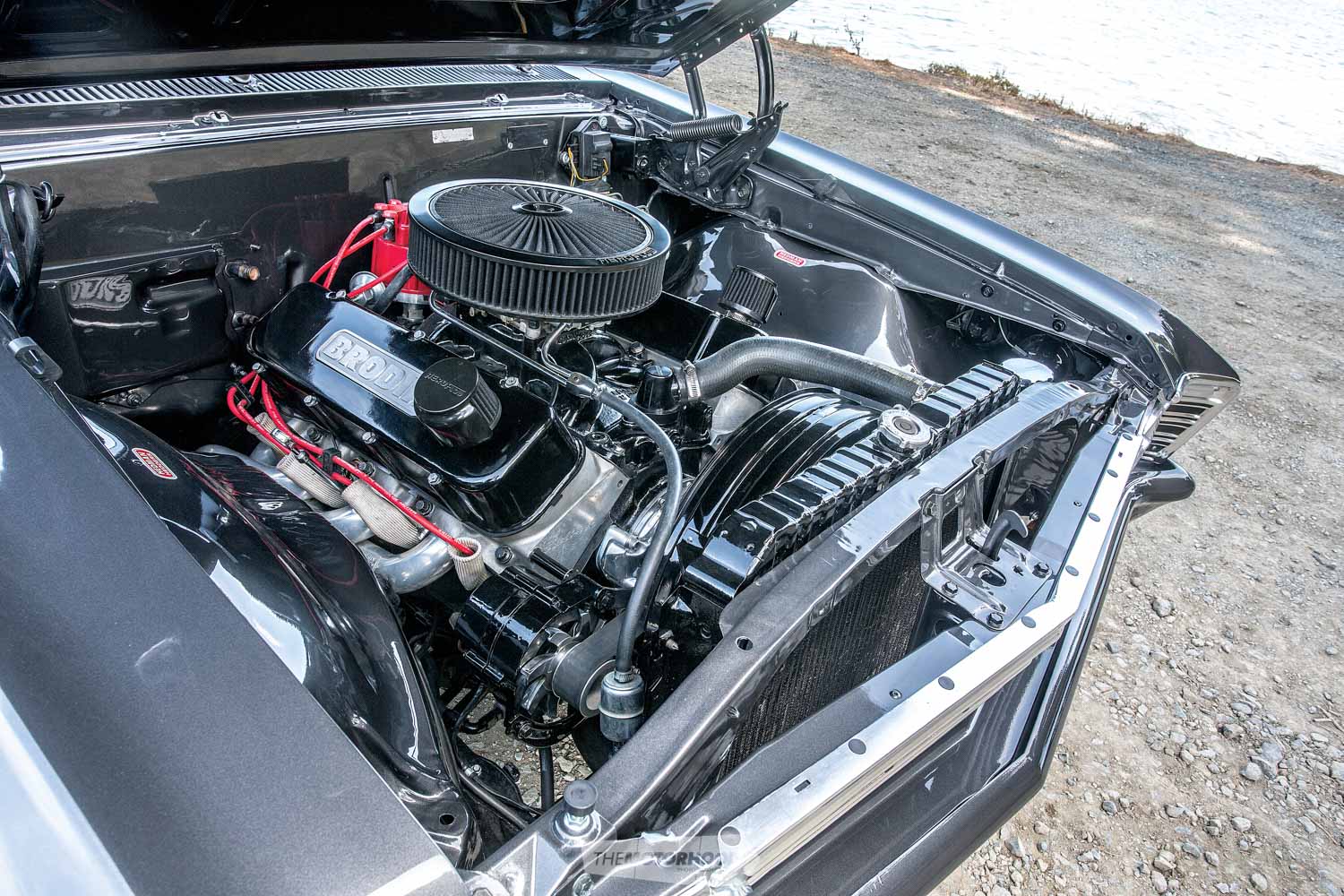
That was a monumental way to begin the rebuild, and, while things slowed down from there, the project was still completed in an incredibly short time frame. Two weeks after the strip-down, Phil still hadn’t decided what he was going to do for an engine; all he knew was that it wasn’t going to be the original anaemic 283 — it had to be a big block.
As luck would have it, a good friend of Phil’s, Paul Randell of Silverdale, happened to be selling a big block. It wasn’t just any big block, either: the 468ci monster had pushed Paul’s Nova to an 11-second quarter-mile at half-throttle — the things people do to avoid getting kicked off the strip! All Phil had to do was convince the better half that it was the just the engine for them. Fortunately, she didn’t need much convincing — although Phil may have been a tad frugal with the truth when he told her he’d found “a big block” for the Chevelle.
Even so, Phil knew that the engine was a little too wild to drop straight in, as the whole build was centred on the Chevelle being a usable family cruiser. A rebuild, along with modifications by Paul, saw the 468 detuned sufficiently to handle family-hauling duties reliably. Don’t for one second think it’s a pussycat, though — it’ll still tear your face clean off when Phil puts his foot down.
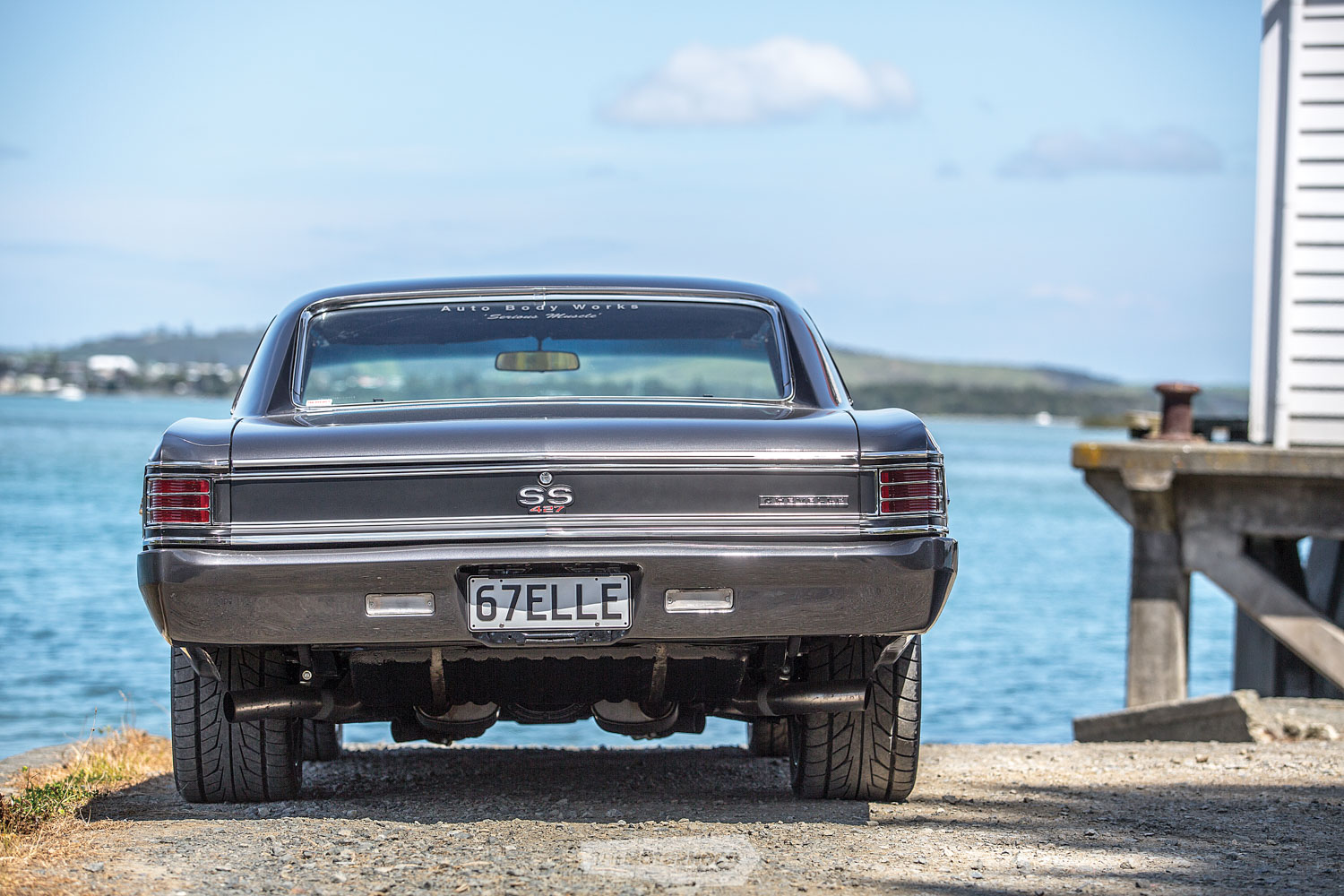
The stout bottom end runs 11:1 compression, and, with a set of full-length Hedman headers with massive two-inch primaries — the smallest that will fit the heavily ported Edelbrock Performer RPM alloy heads — and a full three-inch exhaust, this thing sounds like a barely contained drag car. That’s before Phil flicks the switch for the electronic exhaust cut-outs, releasing an exhaust note hugely at odds with the Chevelle’s otherwise refined nature.
Even though that refined appearance may have you believe that Phil went all out on the build, he’s quick to point out that he didn’t. A Powerglide two-speed auto still backs the potent big block, and the factory 10-bolt diff — complete with open head — still lives out back; neither a race-spec transmission nor a beefed-up diff is necessary for a family cruiser — although Phil has mentioned that he’d like to add a limited-slip diff sooner rather than later. Can’t waste a good 468 cubes on only one tyre mark, right?
It’s the same story with the remainder of the Chevelle’s oily bits. The suspension has been overhauled but is fundamentally factory spec, although the front end has been lowered courtesy of a pair of drop spindles. These actually came about not from an aesthetic perspective but because Phil wanted to upgrade the tank’s front brakes, and the spindles allowed the use of GM two-piston front calipers with 13-inch rotors. The rear’s still got the factory drums, and that isn’t going to change — it doesn’t need to.

The Chevelle’s original, sunburnt patina was always for the chopping block, though. As Phil is a self-employed panel beater at Auto Body Works, this bare-steel rebuild was never going to be a problem for him. However, decisions regarding the few custom touches he wanted to make to the exterior aesthetics took a lot of thought and dreaming, especially with regards to the colour and the choice of wheel.
“According to my wife, I do a lot of thinking in my sleep when I build a car!” Phil says — there’s no question that that thinking has paid off, though. As well as grafting a two-inch reverse-cowl induction scoop into the bonnet — the 468 is a tall bit of engine — Phil has smoothed the firewall in the de-loomed engine bay and applied a liberal dose of custom grey Sikkens paint to the Chevelle’s voluptuous exterior panels, including the smoothed front and rear bumpers, for a custom look. That look is backed up by Phil’s wheel selection, which is something a little different — custom-made US Mags wheels, sourced through MHT Wheels in the States. Some might not like the shiny wheels on an old car, but there’s no question that they lend themselves perfectly to the overall effect Phil was after: an attention-grabbing custom style that isn’t overly ostentatious — and good luck finding another car in this country rolling on the same wheels!
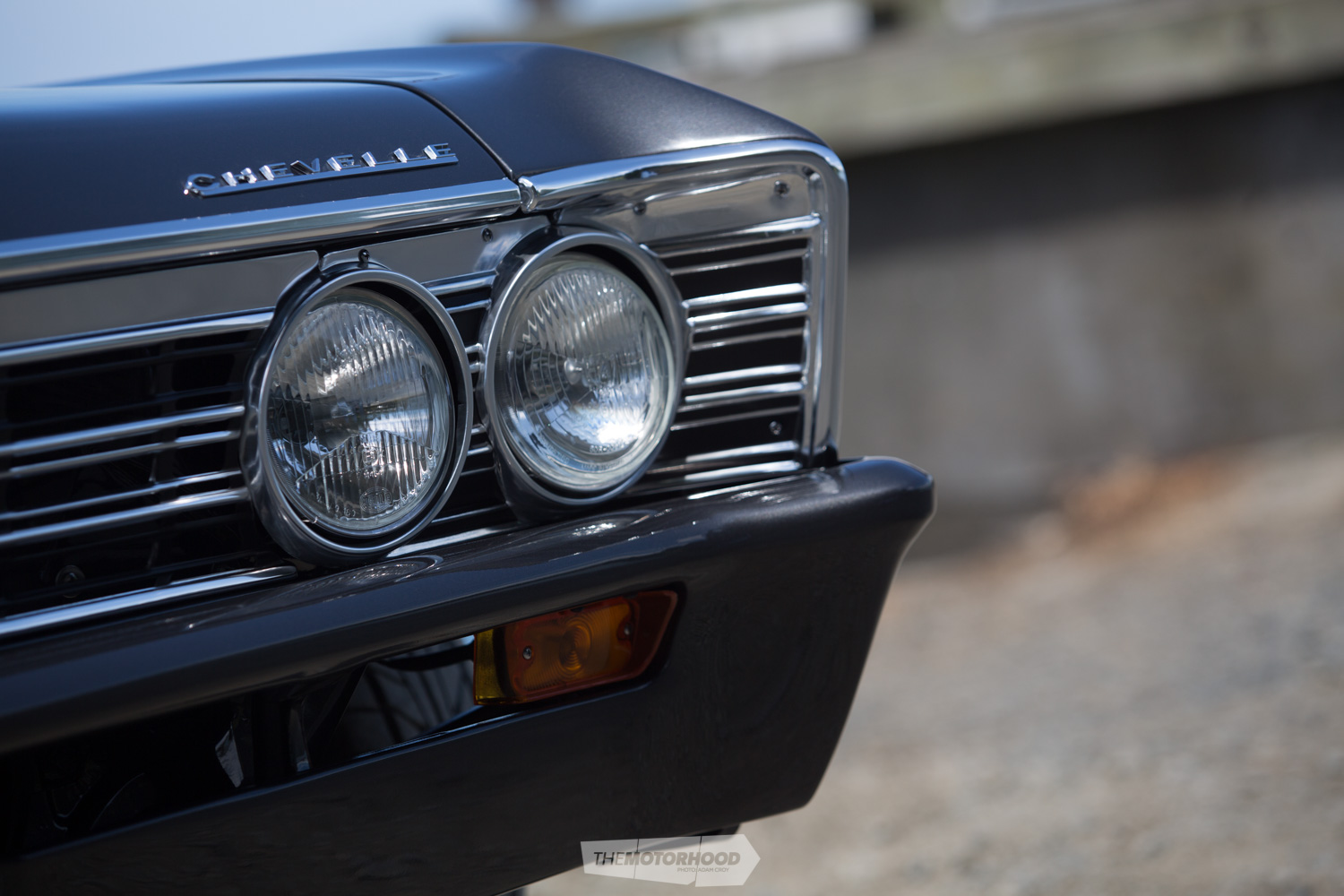
The interior has been taken care of as well, with all-new rubbers, felts, upholstery, hood lining, and dash pad. The tidy factory-style interior is all Phil wants in the car at this stage, given his requirement for a car the whole family can use. “I’d like to go for a custom leather interior when the kids are a bit older,” he adds, “but, for now, it’s better as it is.”
Even so, the things that matter haven’t been overlooked — Phil’s installed a hefty sound system, because, as good as the angry big block sounds, the primary function is keeping the family happy on cruises, whether they’re short or long. With Kane’s help, Phil has built a comfortable and capable cruiser that looks and sounds good enough to keep all eyes in the vicinity firmly glued on to it, that will keep the family happy no matter how long they’re sitting in it, and that has enough raunchy power under the bonnet to keep him happy for a very long time. Now, Phil and the family are looking forward to Beach Hop 2016.
While we don’t know what Phil is going to do with the Chevelle next, we’re willing to bet it that it’ll involve some more time with Kane and no thoughts of putting it up for sale. Looks like the serial car builder has finally met his match.
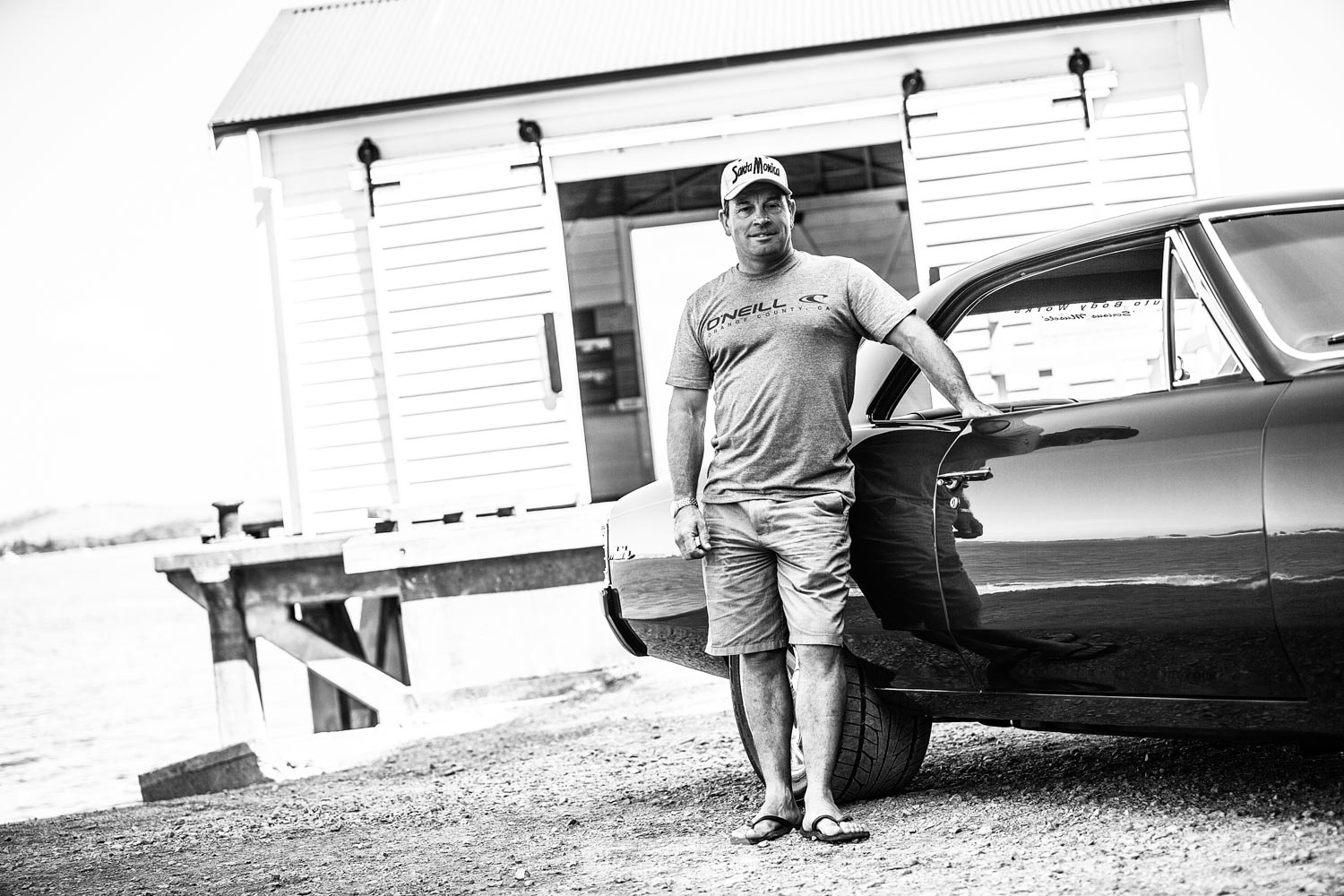
Phil Wright
Age: 45
Occupation: Panel beater (Auto Body Works, Matakana)
Previously owned cars: Too many
Dream car: Oh, too many …
Why the Chevelle? I saw a ’67 Chevelle and started doing some research — from there, I couldn’t stop dreaming about what I could do with it!
Build time: 16 weeks
Length of ownership: 18 months
Phil thanks: My beautiful wife, Cheri, who says a build like this is made of my blood, sweat, and tears — that’s tears of joy, of course; big thanks to Paul Randell in Silverdale, for the engine; and my son, Kane, for giving me the push I needed to start this build, taking all that interest, and helping me along the way
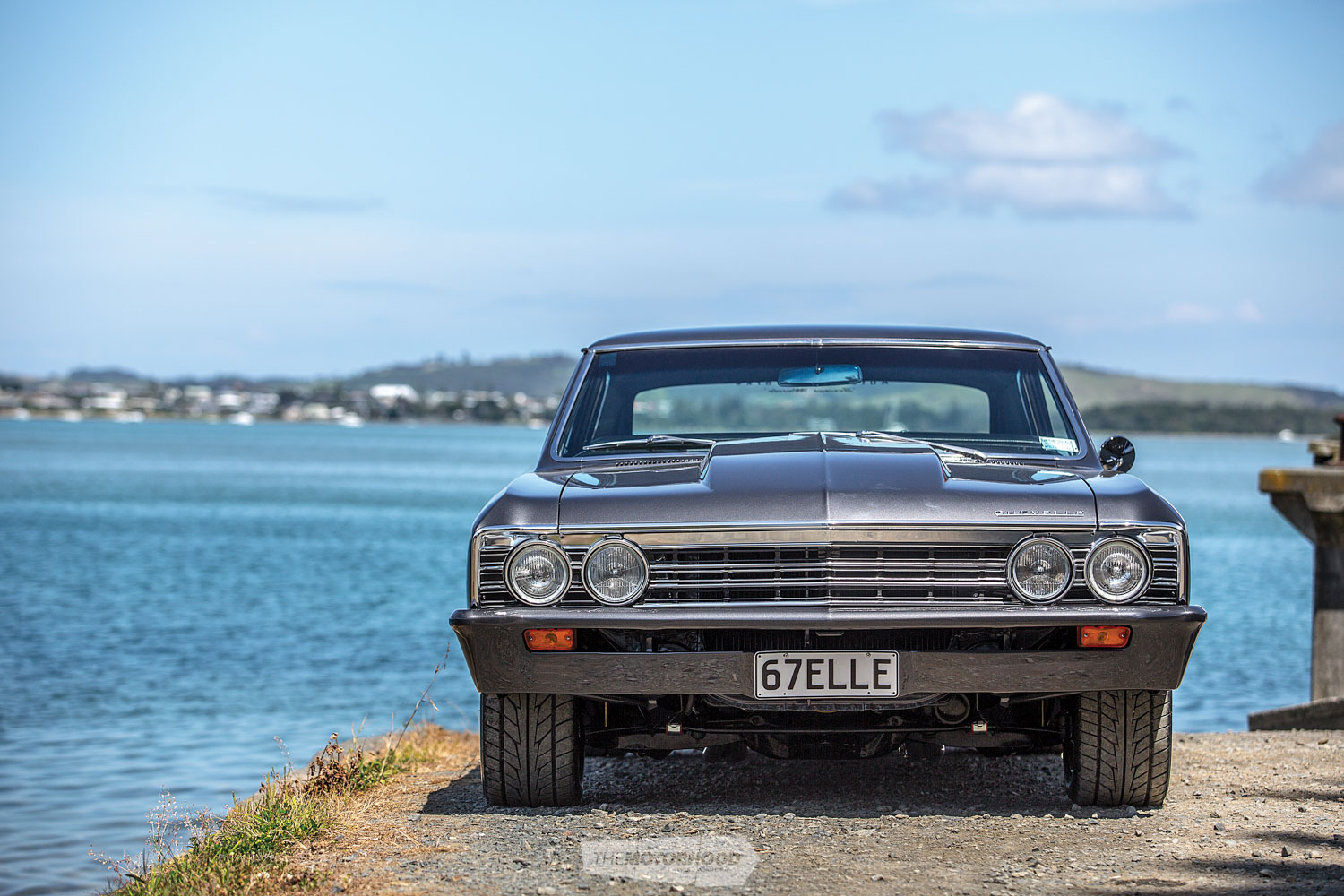
1967 Chev Chevelle Malibu
Engine: 468ci big block Chev, four-bolt mains, 0.030-inch overbore, factory 454 crankshaft, factory rods, Speed-Pro pistons, 11:1 static compression ratio, Comp Cams custom-ground camshaft, Comp Cams lifters, Comp Cams pushrods, Comp Cams Pro Magnum roller rockers, ported Edelbrock Performer RPM heads, port-matched Edelbrock Performer RPM intake manifold, Holley 950cfm double-pumper carburettor, high-volume fuel pump, Procomp high-energy ignition (HEI), Hedman headers, two-inch primaries, full three-inch exhaust, electronic exhaust cut-outs, Melling oil pickup
Driveline: GM Powerglide two-speed auto, GM 10-bolt diff
Suspension: Rebuilt factory double-wishbone front, drop spindles, rebuilt factory triangulated four-link rear
Brakes: GM two-piston front calipers, cross-drilled 13-inch rotors, factory drums
Wheels/Tyres: 18×8-inch and 18×10-inch US Mags wheels, 255/45R18 and 285/40R18 Nitto tyres
Exterior: Sharpened lines, custom two-inch bonnet scoop, Sikkens custom paint, de-loomed engine bay, smoothed firewall
Interior: Factory interior, new seat trims, custom steering wheel, factory gauges, restored chrome, colour-matched dashboard, Sony head unit, six-inch front speakers, 6×9-inch rear speakers, 12-inch sub, 1000W amp
Performance: Untested
This article originally appeared in NZV8 magazine issue No. 131 — to get your grubby mitts on a print copy, click the cover below:





